The proposed zoning has been approved for a mixed-use, seven-story development at 1623 N Halsted Street on the border of Lincoln Park and Old Town. Located along N Halsted Street, the interior site is between W Concord Place and W Willow Street. The lot is directly north of the CTA Brown Line tracks and is a transit-served location. The immediate area consists of low-rise residential and mixed-use buildings, with a mix of office and restaurants at grade and residential units above. The new development will replace four existing buildings. JDL Development and Logan Ventures are in charge of the development.
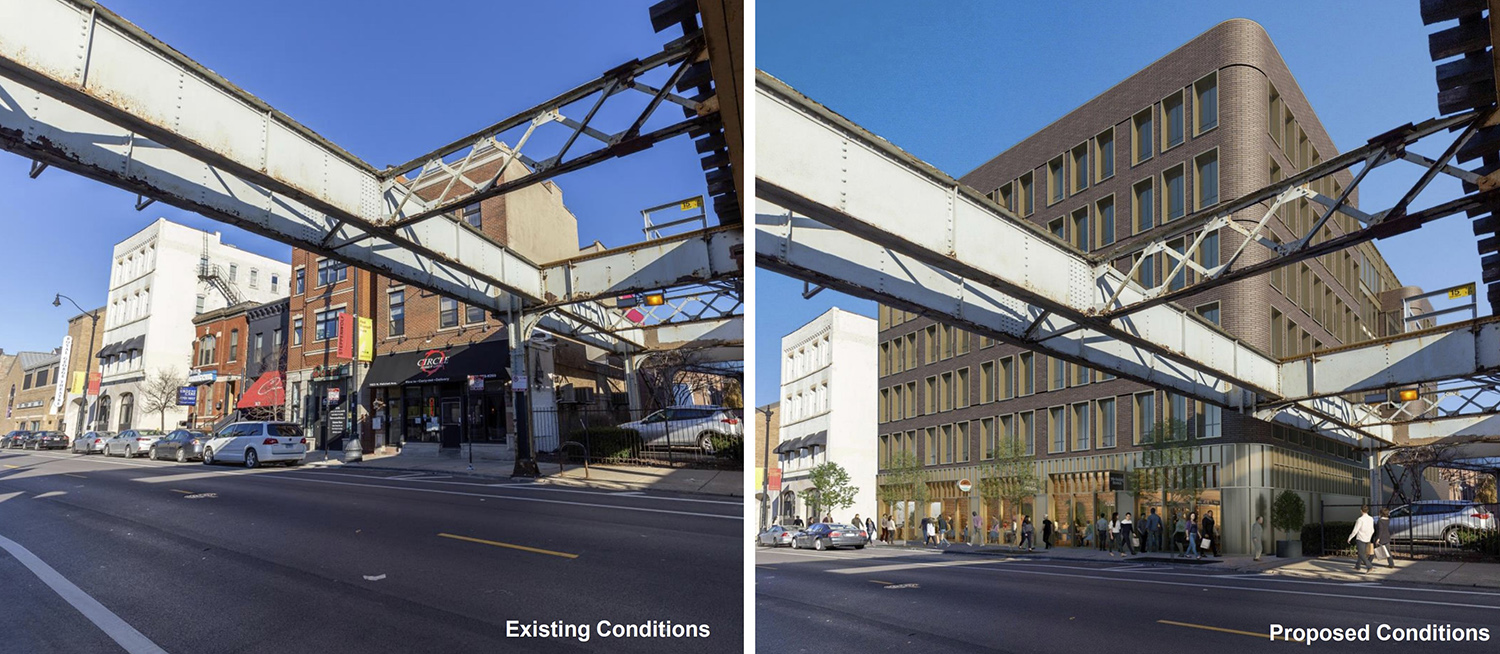
View of Existing Conditions (left) vs. Proposed Conditions (right) for 1623 N Halsted Street. Rendering by Hartshorne Plunkard Architecture
The developer proposed to rezone the site to allow for the larger building, which has been approved. The existing zoning is B3-2, Community Shopping District, while the new zoning will be B3-5, Community Shopping District, The final zoning will designate the site as a Residential-Business Planned Development.
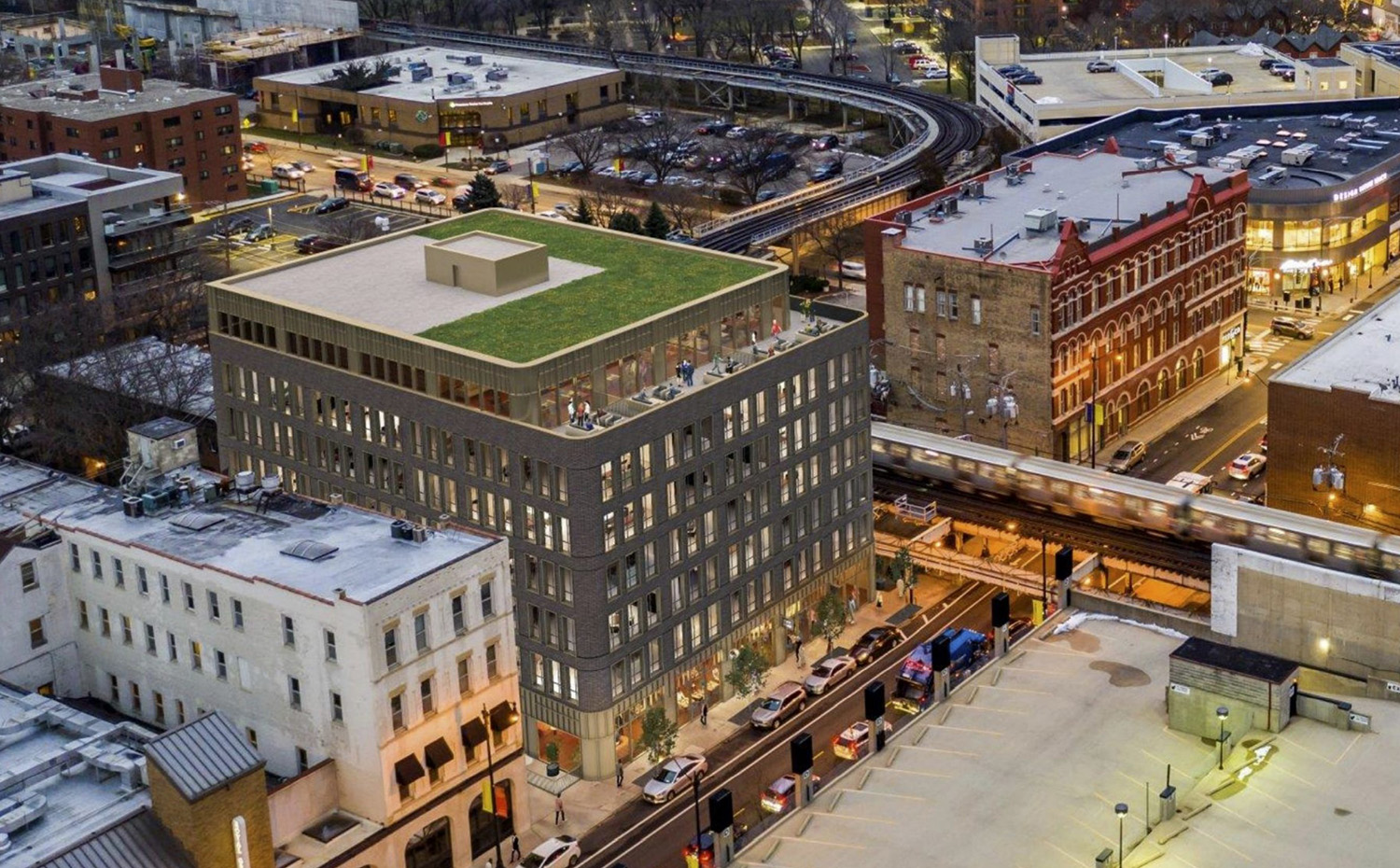
View of 1623 N Halsted Street. Rendering by Hartshorne Plunkard Architecture
Designed by Hartshorne Plunkard Architecture, the development will rise 84 feet high, and hold 79 residential units and 4,750 square feet of ground-floor retail space. The structure will hold 79 bicycle parking spaces but no accessory vehicle parking.

Site Plan for 1623 N Halsted Street. Drawing by Hartshorne Plunkard Architecture
The site plan shows that the project site is bounded by the CTA L tracks to the south, by the public alley to the east, by N Halsted Street to the west, and an adjacent property setback 17.5 feet to the north. The new development will enhance the streetscape by closing curb cuts and offering bicycle amenities.

Floor Plans for 1623 N Halsted Street. Drawing by Hartshorne Plunkard Architecture
Typical floor plans show that the first floor will hold the commercial space and residential lobby, with back of house space and bike parking accessed off of the rear alley. The second through sixth floor plans include units setback off of the public alley, creating a terrace along the alley, while a setback on the south side creates another terrace. The seventh floor setbacks from N Halsted Street and the CTA L tracks, which maximizes access to outdoor space and minimizes the visual impact on N Halsted Street. The setback becomes imperceptible at grade.
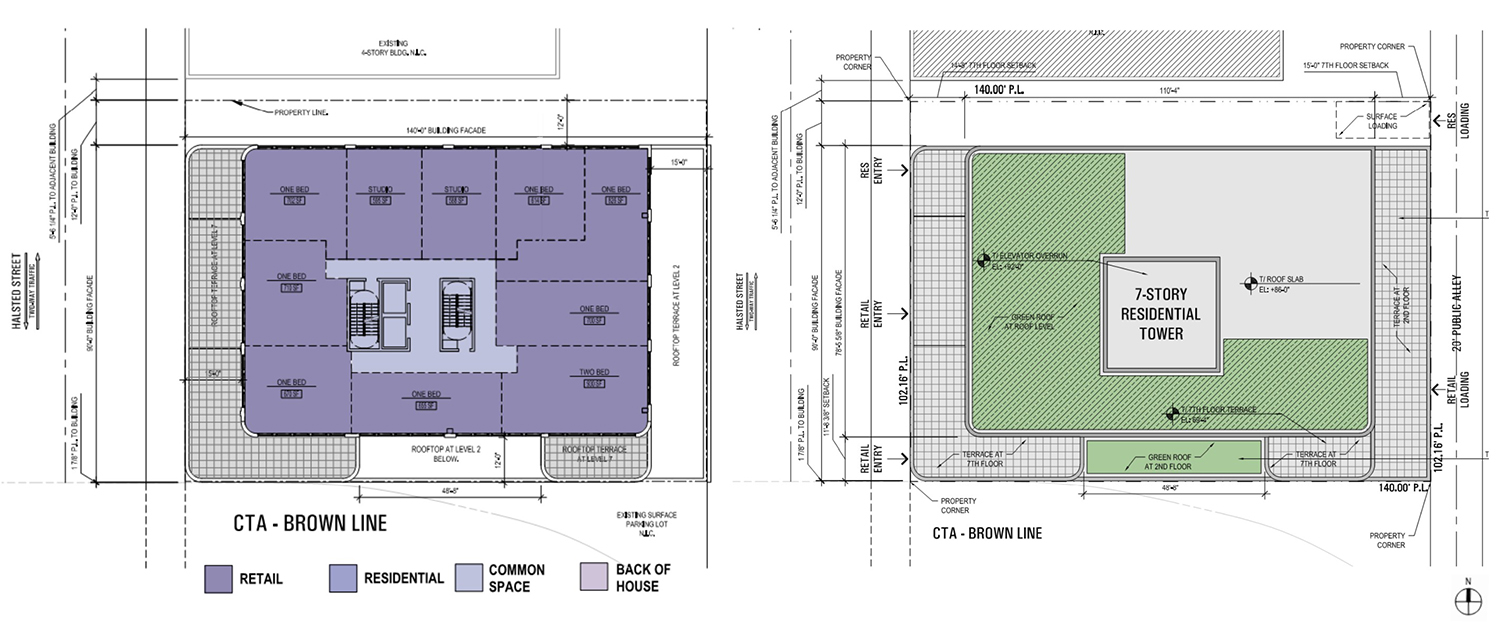
Floor Plans for 1623 N Halsted Street. Drawing by Hartshorne Plunkard Architecture
The façade of the building is clad in a warm gray-tone red brick with champagne-colored painted aluminum panels in an articulated pattern of vertical ribbing. The distinguishing feature of the form is the rounded corners, which relate to the bend in the CTA L tracks.
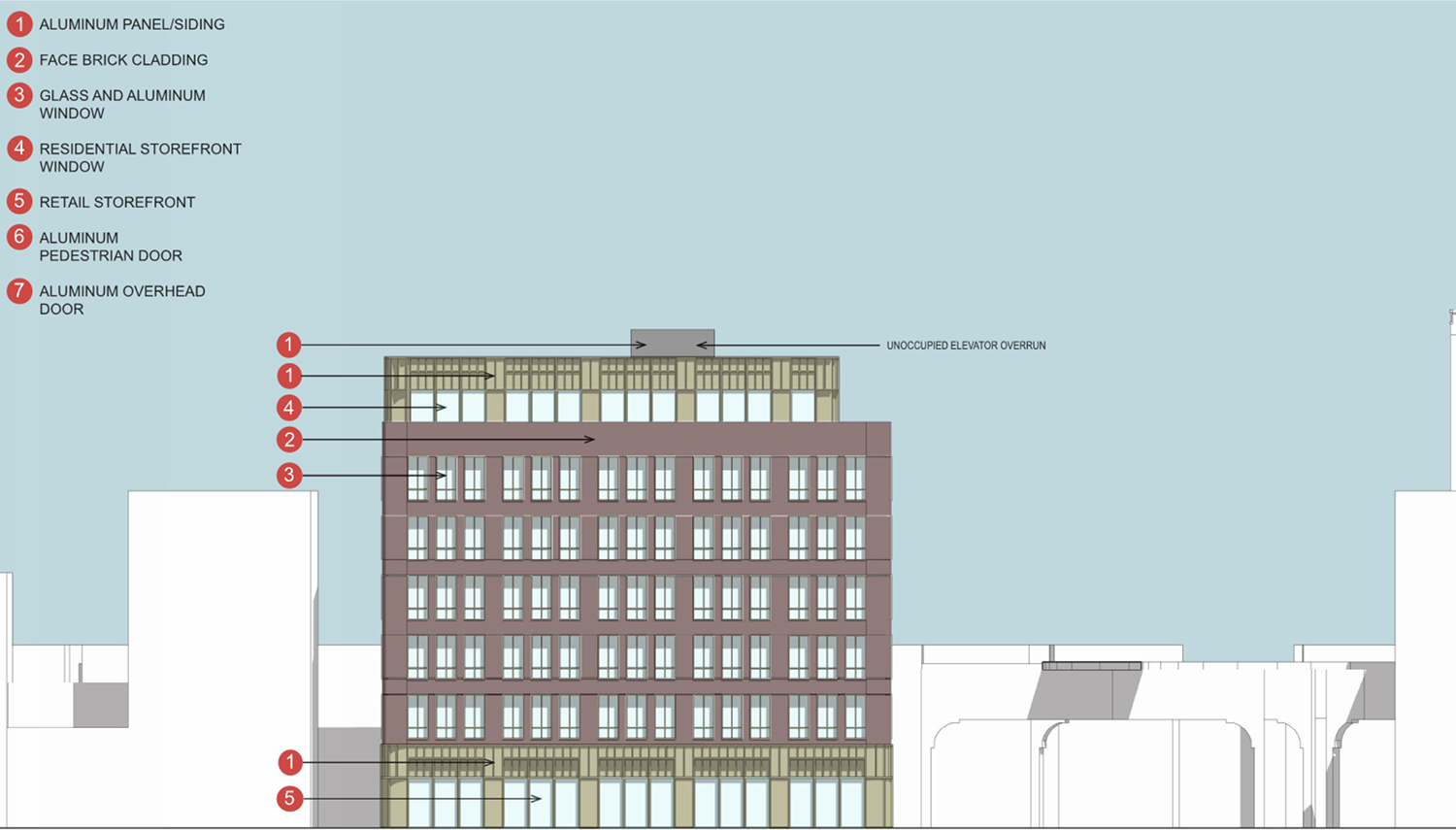
West Elevation for 1623 N Halsted Street. Drawing by Hartshorne Plunkard Architecture
A maximum of storefront glazing and active uses are implemented along N Halsted Street. The northern elevation shows the seventh floor setback, while the eastern elevation shows the view in the alley. The southern elevation is the view facing the tracks, and shows the rounded corners and integration of aluminum panels. The windows are inset with punched openings within the masonry wall, framed inside matching aluminum projections.
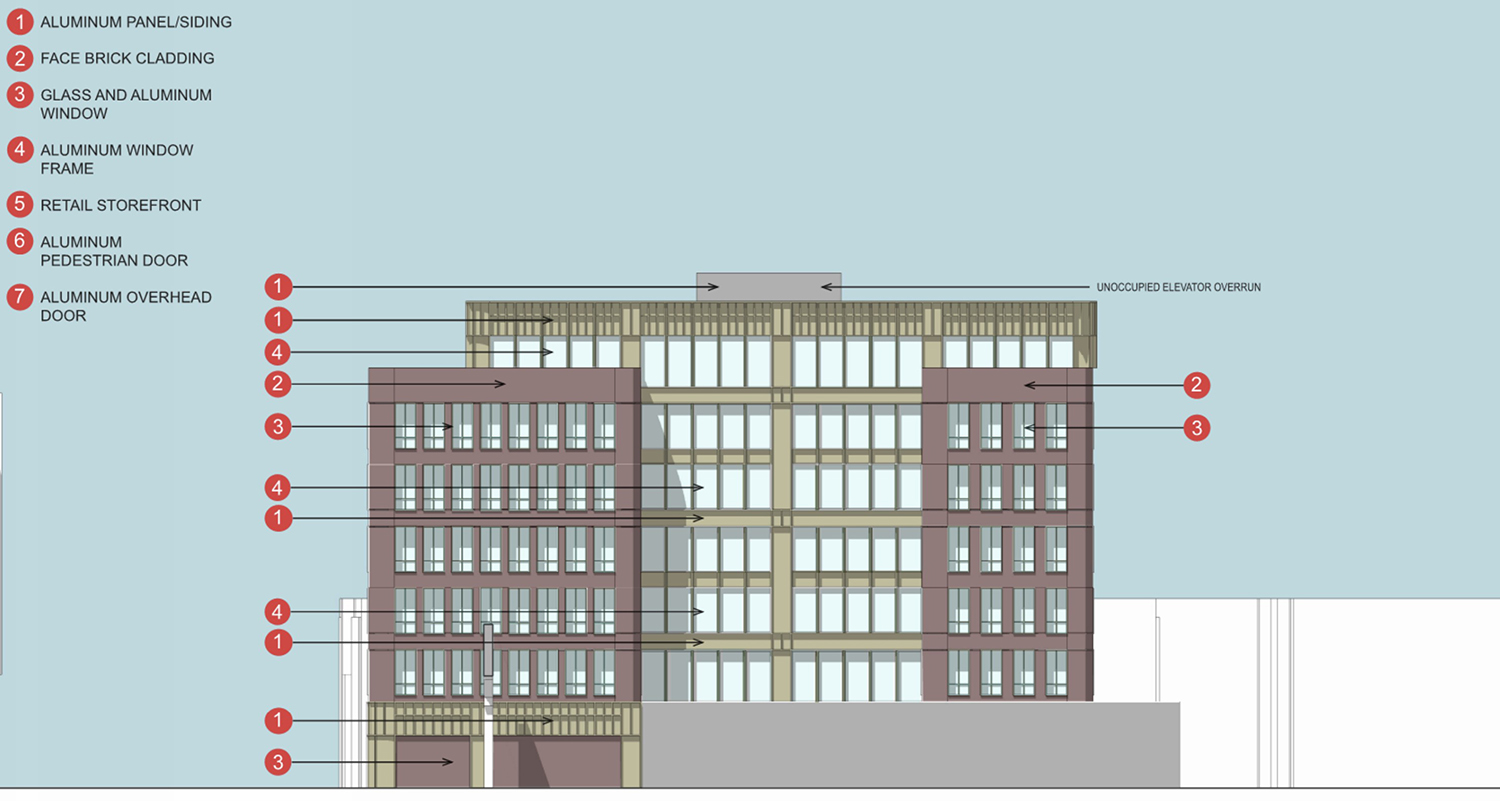
North Elevation for 1623 N Halsted Street. Drawing by Hartshorne Plunkard Architecture
CTA access near the site is plentiful. The North/Clybourn CTA L station, serviced by the Red Line, can be reached within a two-minute walk. The 8, 9, and 72 CTA bus routes can be accessed at the corner of W North Avenue and N Halsted Street, also within a two-minute walk from the site.
The development is estimated to cost approximately $20 million. An official timeline has not been announced for the project.
Subscribe to YIMBY’s daily e-mail
Follow YIMBYgram for real-time photo updates
Like YIMBY on Facebook
Follow YIMBY’s Twitter for the latest in YIMBYnews

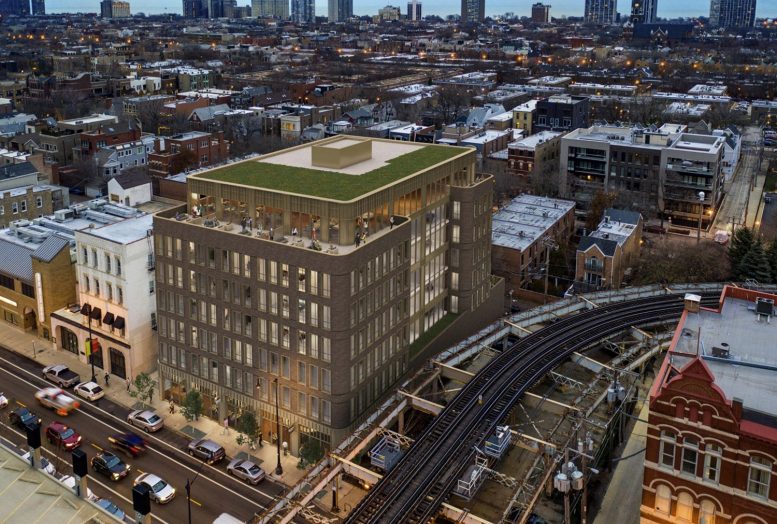
Great project — quality design and no parking. Lincoln Park needs more of this.
I completely agree, very impressed by this project.
Buildings such as these need reduced footprints with more verticality. Every city builds squat low rises. What would make Chicago unique and unable to be equaled by competitors outside of NY is if we allowed high-rises to fill-in our outer neighborhoods as we did decades ago along the north lakefront.
If this building was a high-rise and only replacing the two 2-story structures squeezing in-between the existing 4-story buildings on either side it would create a much more diverse and cascading streetscape. I wish this was the model of city-building our officials, planners and residents would actively aspire to create.
Having said all that, aesthetically this design is much better in comparison to the average multifamily building we see today if it stays true to the rendering.
If only we could reach a day when all this aluminum is replaced with actual brass, bronze or copper.
I forgot to add that this proposal was originally an 14 story building with stepped se-backs that was shortened 11 stories and then finally to 7 stories in typical Chicago fashion. The original version was very impactful and had a Brooklyn feel. Now the life has presence has been taken out of it like the Uptown courtyard building the other day that was redesigned.
Chicago needs to get serious about what kind of city we want to build for future generations. They are doing their best to turn us into generic anywhere U.S.A. height/density/scale/design are all on the chopping block so to speak. We have lost our vision and identity through irrational fears and complacency.